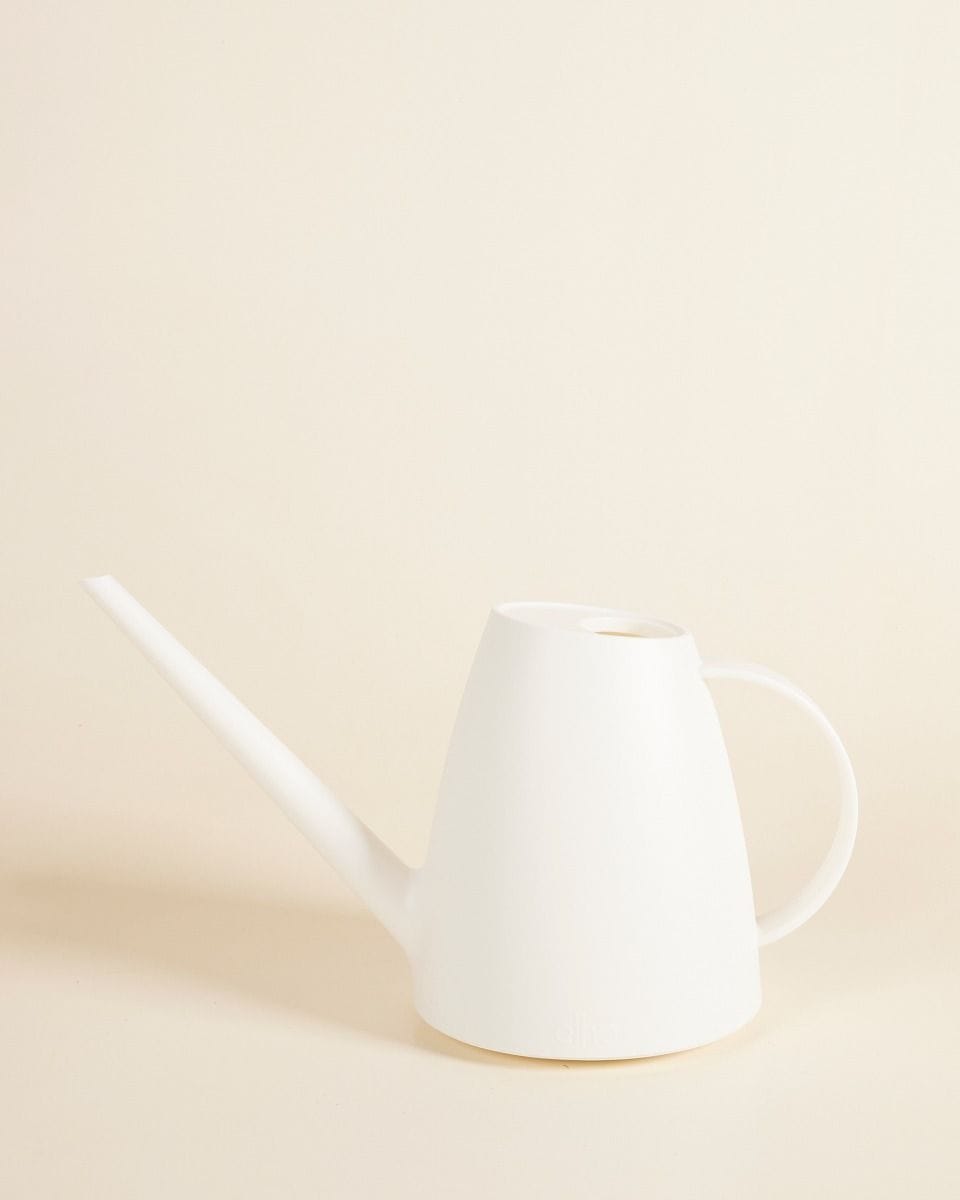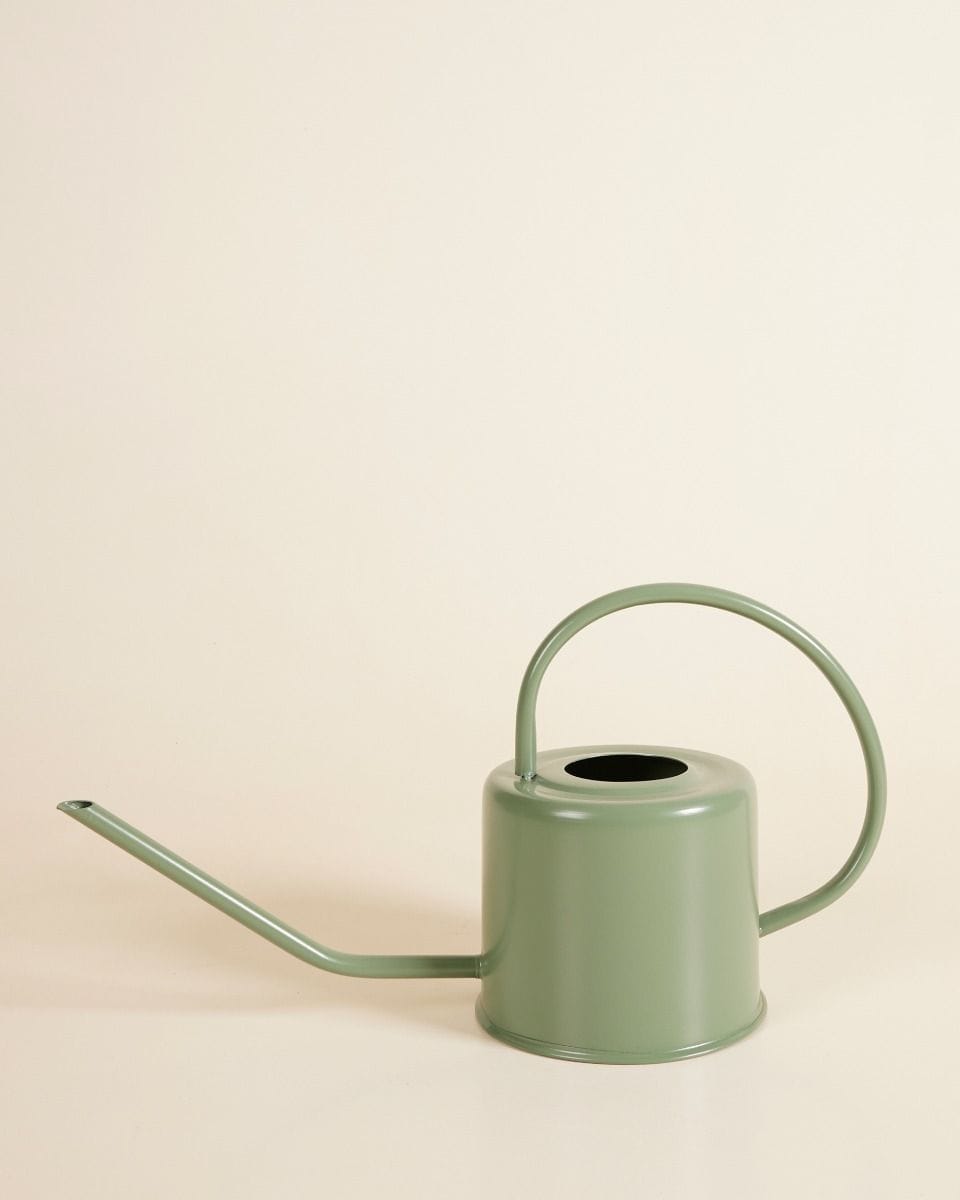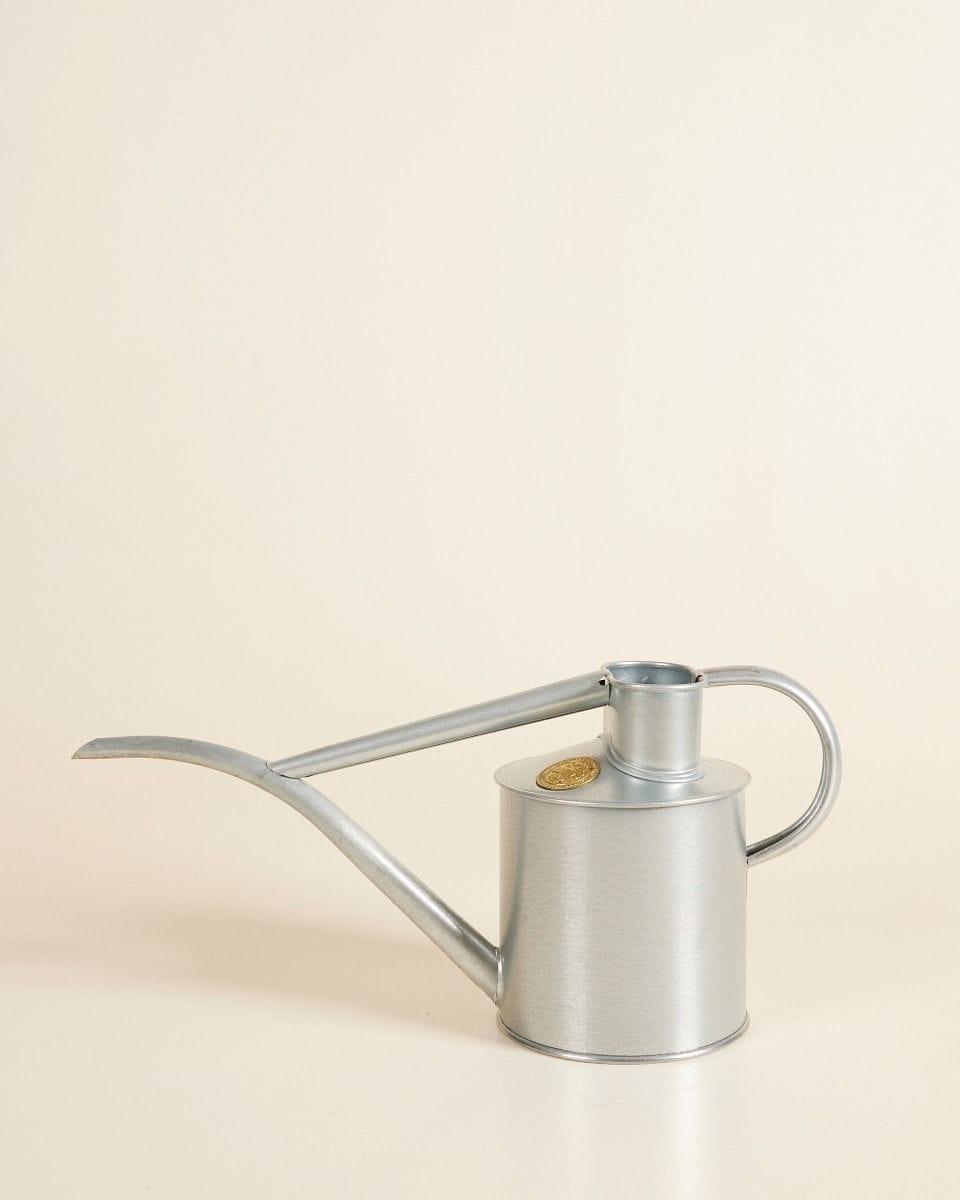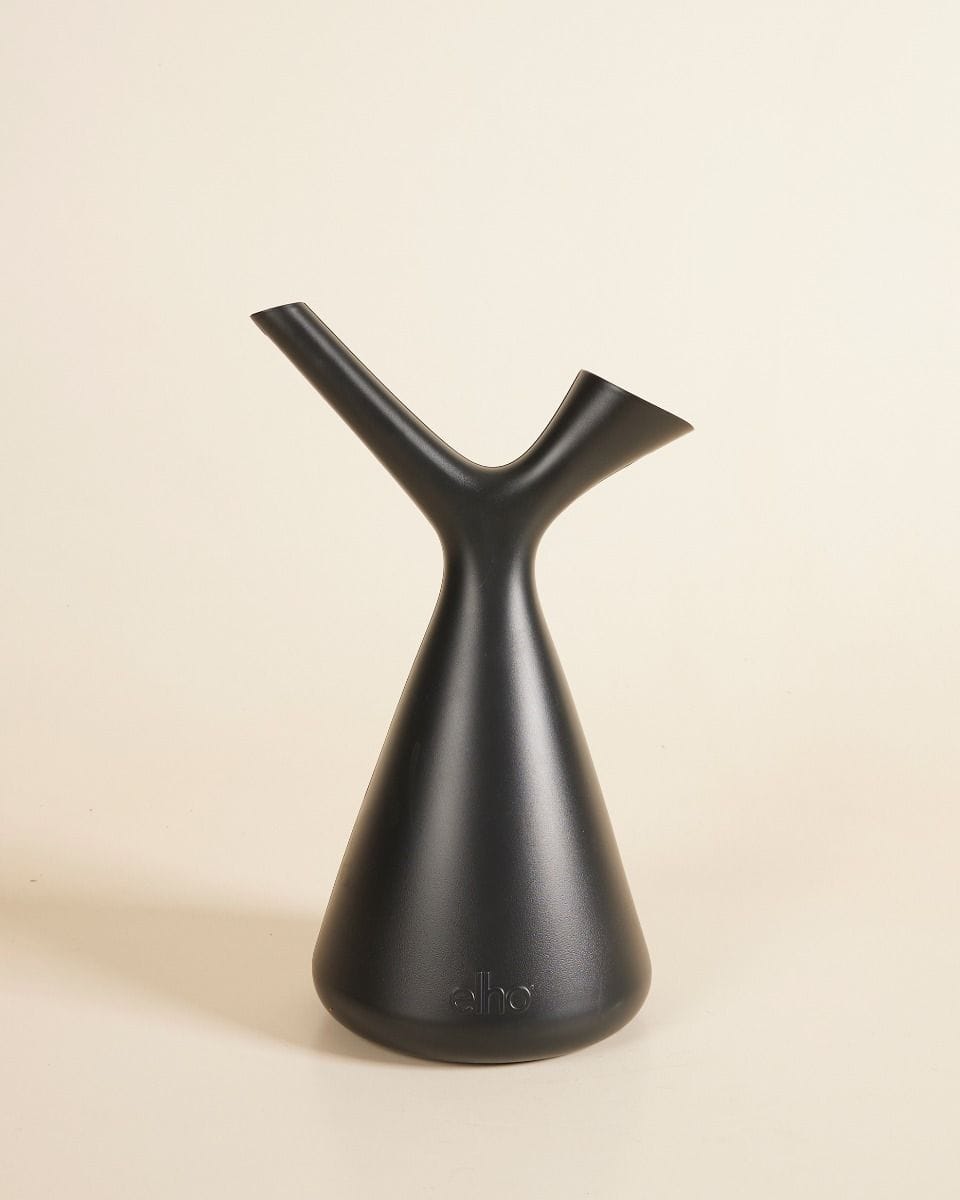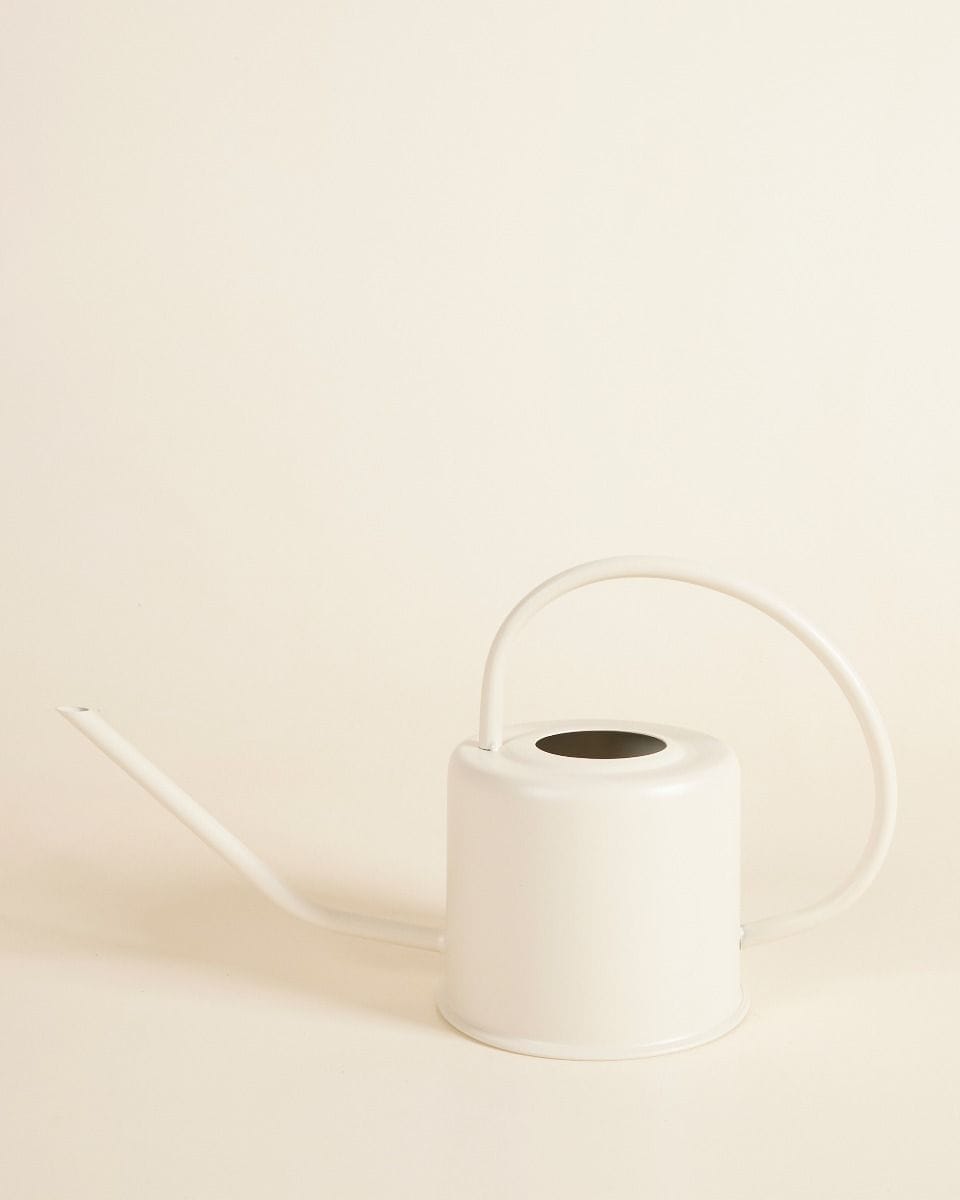Dans cet article
- 1 L’arrosage des plantes en intérieur
- 1.1 Quand arroser et quelle quantité d’eau donner ?
- 1.2 Quels sont les facteurs qui influencent les besoins en eau d’une plante ?
- 1.3 Les différentes méthodes d’arrosage
- 1.3.1 Arroser par le haut
- 1.3.2 Arroser par le bas (faire tremper)
- 1.4 Utiliser un humidimètre
- 1.5 Est-ce que l’eau du robinet est mauvaise pour les plantes ?
- 1.6 6 astuces indispensables pour l’arrosage
L’arrosage des plantes en intérieur
Arroser ses plantes en intérieur semble facile. Pourtant, nous sommes nombreux à rencontrer des difficultés avec l'arrosage. De nombreux facteurs influencent les besoins en eau des plantes, et font qu'il est difficile de savoir exactement quand et à quelle fréquence arroser, sans parler de la quantité dont chaque plante a besoin. Cet article est fait pour vous aider à y voir plus clair !
Quand arroser et quelle quantité d’eau donner ?
Chaque plante a des besoins en eau différents. Si vous n'êtes pas sûr de la quantité d'eau à donner à votre plante, pensez à son milieu naturel d'origine. De nombreuses plantes populaires proviennent de régions tropicales où il pleut régulièrement. Ces espèces ont souvent de grandes feuilles et un feuillage luxuriant, qui nécessitent beaucoup d'humidité pour être belles. En revanche, les plantes désertiques comme les cactus et les plantes grasses ont besoin de moins d'eau. Elles se portent souvent mieux si vous laissez le sol s'assécher entre les arrosages.
Une fois que vous avez déterminé les besoins en eau de votre plante, il est temps de vérifier le degré d'humidité du sol. Vous saurez ainsi s'il est vraiment temps d'arroser votre plante. Pour vous faciliter la tâche, les plantes peuvent être classées en trois catégories en fonction de leurs besoins en eau :
-
Plantes à faible besoin d'arrosage - Ces plantes ont besoin d'un arrosage peu fréquent et sont très tolérantes à la sécheresse. En règle générale, le sol doit être complètement sec avant de procéder à un nouvel arrosage. Les plantes ZZ, les cactus et les plantes grasses entrent dans cette catégorie. Quel est le bon moment pour arroser ? Il est temps d'arroser lorsque vous n'avez pas arrosé cette plante depuis un bon bout de temps. La terre est pâle et sèche en haut et en bas.
-
Plantes ayant des besoins d'arrosage moyens - Ces plantes ont besoin d'un équilibre. Leur sol doit rester humide mais pas détrempé. Les Chlorophytums, Spatiphyllums et Philodendrons entrent dans cette catégorie. Quel est le bon moment pour arroser ? Arrosez ces plantes lorsque la motte de terre s'est légèrement desséchée. Les feuilles peuvent commencer à s'affaisser légèrement, ou vous remarquez que le pot est léger lorsque vous le soulevez.
-
Plantes ayant de grands besoins en eau - Ces plantes ont besoin d'un sol constamment humide et peuvent nécessiter un arrosage plusieurs fois par semaine. Les Marantas, les Fittonias et différentes fougères entrent dans cette catégorie. Quel est le bon moment pour arroser ? Vérifiez ces plantes tous les jours ou tous les deux jours. Si la surface du sol est sèche au toucher, il est temps d'arroser. Ces plantes peuvent également présenter des signes précoces de déshydratation, tels que des extrémités de feuilles flétries ou brunes. Il est préférable de leur donner une bonne "pluie tropicale" en une seule fois afin que tout le pot soit bien humide, après quoi il se desséchera à nouveau lentement.

Quels sont les facteurs qui influencent les besoins en eau d’une plante ?
Comme nous l'avons déjà mentionné, de nombreux facteurs peuvent influer sur la quantité d'eau nécessaire à vos plantes. Il ne s'agit pas seulement de savoir de quel type de plante il s'agit. Voici les autres facteurs à prendre en compte :
- Taille de la plante - Une grande plante ou une plante avec de grandes feuilles utilisera beaucoup plus d'eau qu'une petite plante similaire.
- Taille du pot et de la motte de terre - Plus le pot est grand, plus il y a de terreau et plus il peut absorber et distribuer d'eau. En revanche, les petits pots peuvent nécessiter des arrosages plus fréquents, car ils se dessèchent plus rapidement.
- Type de sol et substrat - Les sols à base de tourbe retiennent mieux l'eau et assurent un apport régulier aux racines. Les sols sableux se drainent plus rapidement et peuvent nécessiter des arrosages plus fréquents. Il existe des substrats spéciaux qui peuvent absorber l'eau et la restituer lentement au fil du temps. Ces substrats garantissent qu'une plante ou même ses racines ne reçoivent pas trop d'eau en une seule fois. Consultez notre page sur les différences entre le terreau et les substrats pour être bien informé à ce sujet !
- Exposition à la lumière - En pleine lumière, les plantes font davantage de photosynthèse, ce qui entraîne une plus grande consommation d'eau. De plus, la lumière intense peut chauffer le sol et le faire sécher plus rapidement. Par conséquent, les plantes exposées à une lumière intense ont souvent besoin d'être arrosées plus fréquemment que celles qui sont exposées à une lumière faible.
- Saisons et météo - De nombreuses plantes poussent moins en automne et en hiver. Si vous remarquez que vos plantes poussent moins que d'habitude, c'est qu'elles utilisent également moins d'eau.
- Température et humidité - Le chauffage ou la climatisation entraîne une baisse de l'humidité de l'air, ce qui a pour effet d'augmenter la consommation d'eau des plantes. Lorsque les températures augmentent et que l'humidité diminue, l'eau s'évapore plus rapidement du sol et les plantes utilisent plus d'eau pour se refroidir.
Les différentes méthodes d’arrosage
Maintenant que vous savez quand et comment arroser vos plantes, vous vous demandez peut-être comment procéder. Il existe deux méthodes de base : l'arrosage par le haut et l'arrosage par le bas. Nous expliquerons ces deux méthodes plus en détail ci-dessous :
Arroser par le haut
Le sol semble sec, que faire maintenant ? Commencez par remplir votre arrosoir avec de l'eau à température ambiante. La température de l'eau est importante, car une eau trop chaude ou trop froide peut choquer les racines de votre plante d'intérieur. Vous pouvez maintenant penser à arroser légèrement le sol. Après tout, vous ne voulez pas noyer votre plante, n'est-ce pas ? Mais voilà : un léger arrosage n'est peut-être pas suffisant. Les racines de votre plante, qui ont le plus besoin d'humidité, ne se trouvent pas seulement à la surface du sol.
Quelle est donc la bonne façon d'arroser ? Il est important d'arroser complètement le sol. Versez suffisamment d'eau jusqu'à ce qu'elle commence à s'écouler des trous de drainage situés au fond du pot. Si vous placez une soucoupe sous le pot, l'eau excédentaire s'y accumulera et votre plante pourra en absorber un peu plus si nécessaire.
Conseil d'expert : veillez à vider la soucoupe après 10 minutes. En outre, veillez à ce qu'il ne reste pas trop d'eau au fond du pot extérieur. Si c'est le cas, videz-la. Un contact prolongé avec de l'eau stagnante peut faire pourrir les racines, ce que nous ne voulons surtout pas !
Arroser par le bas (faire tremper)
L'arrosage par le bas est une méthode qui consiste à placer le pot dans un récipient rempli d'eau et à laisser la plante absorber l'humidité par les trous de drainage. C'est une excellente méthode d'arrosage car les racines absorbent autant d'eau qu'elles en ont besoin. Lorsqu'elles en ont assez, elles cessent d'absorber.
Placez simplement votre plante sur une soucoupe ou un bol avec de l'eau et laissez-la pendant environ 30 minutes. Votre plante absorbera alors elle-même la quantité d'eau nécessaire. Versez de l'eau dans la soucoupe autant de fois que nécessaire jusqu'à ce que la plante ne l'absorbe plus. Cette méthode fonctionne particulièrement bien avec les plantes de petite et moyenne taille.
Les grandes plantes seront plus facilement placées dans un seau ou directement dans un évier ou une baignoire. Veillez à ce que l'eau atteigne environ la moitié du pot de la plante. Au bout d'un certain temps (une heure ou plus), la plante aura absorbé toute cette eau. Surveillez l'eau dans le seau ou le récipient, elle devrait diminuer de plus en plus. Lorsque ce n'est plus le cas pendant 20 minutes, c'est le signe que la plante a absorbé suffisamment d'eau.
Conseil d'expert : n'oubliez pas de ne pas laisser votre plante trop longtemps dans un seau d'eau. Si elle reste trop longtemps dans l'eau, les racines risquent de manquer d'air et de pourrir. Mais ne vous inquiétez pas, si vous l'avez accidentellement laissée tremper trop longtemps, il suffit de la sortir. Laissez le pot à l'air libre pour qu'il sèche un peu plus vite. De cette façon, votre plante retrouvera rapidement sa vitalité.
Utiliser un humidimètre
L'utilisation d'un humidimètre est un moyen simple de contrôler les niveaux d'eau de vos plantes. C'est un outil très utile ! Il existe des humidimètres fait d'un tube en plastique avec une sorte de flotteur en polystyrène et un bâton de mesure à l'intérieur. Dès que l'humidimètre entre en contact avec de l'eau ou un sol humide, le polystyrène flotte et le compteur monte.
Il existe également des humidimètres qui changent de couleur, ce qui permet de savoir si la plante a encore assez d'eau ou si elle a encore besoin d'un peu d'eau. Habituellement, la couleur de l'écran passe du bleu au rouge lorsqu'un arrosage est nécessaire. Mais notre humidimètre Tessa change de couleur et devient blanc lorsque votre plante a soif !
Est-ce que l’eau du robinet est mauvaise pour les plantes ?
Vous pensez avoir fait le tour de la question, mais le doute s'installe soudain. Pouvez-vous donner à vos plantes de l'eau du robinet ? Oui, vous pouvez, mais... vous devez faire en sorte que l'eau du robinet soit sans danger pour les plantes. Préparez votre arrosoir au moins 24 heures à l'avance, afin que le chlore et le fluor puissent s'évaporer de l'eau et que l'eau soit à température ambiante. L'eau du robinet contient de très petites quantités de chlore et de fluor, et certaines plantes y sont plus sensibles que d'autres. Si votre plante présente des taches ou des bords bruns, cela peut être dû à un arrosage trop fréquent avec du chlore et du fluor.
Conseil d'expert : si possible, arrosez vos plantes avec de l'eau de pluie. L'eau de pluie contient plus d'oxygène que l'eau du robinet, ce qui permet à la plante d'absorber encore mieux les nutriments. Vous avez un tonneau d'eau de pluie ? Dans ce cas, videz l'eau dans une bouteille vide et laissez-la à température ambiante pendant au moins 24 heures. Votre pays a-t-il des averses régulières ? Dans ce cas, vous pouvez également placer un seau à l'extérieur pour recueillir l'eau de pluie.
Certaines recherches suggèrent que l'eau gazeuse pourrait être bénéfique pour les plantes. On pense que le dioxyde de carbone dissous dans l'eau gazeuse pourrait favoriser l'absorption des nutriments par la plante. La croissance et le développement du système racinaire s'en trouveraient améliorés. Par conséquent, votre plante poussera plus vite et aura des feuilles plus belles, plus vertes et plus grandes. Rien n'est trop fou pour nos bébés plantes, n'est-ce pas ?

6 astuces indispensables pour l’arrosage
- La principale cause de la mort des plantes est l'excès d'eau et, par conséquent, le pourrissement des racines. C'est pourquoi il vaut souvent mieux donner trop peu d'eau que trop d'eau. Le pourrissement des racines est difficile à corriger et la déshydratation ne se produit réellement que lorsque les plantes sont sans eau pendant de longues périodes.
- La meilleure façon de vérifier si votre plante a besoin d'eau est de planter un doigt ou un bâton d'au moins 3 centimètres (attention aux racines) dans le terreau. Si la terre colle à votre doigt ou au bâton, c'est qu'elle est encore suffisamment humide. Si votre doigt ou votre bâton ressort propre, vous savez qu'il est temps (ou presque) d'arroser votre plante.
- Une autre façon de vérifier vos plantes est de soulever le pot. Une plante dont la terre est sèche ne pèse pas très lourd. Après l'avoir pesée plusieurs fois, vous aurez une idée de son état et vous pourrez également sentir si la plante a besoin d'eau en fonction du poids du pot.
- Le meilleur moment pour arroser vos plantes est le matin. Si les feuilles sont mouillées, elles ont toute la journée pour sécher. Il est beaucoup plus difficile pour les champignons de s'implanter lorsque les feuilles sont sèches. Si vous ne pouvez pas arroser le matin, la meilleure solution est d'arroser le soir.
- Lorsque vous arrosez votre plante à l'aide d'un arrosoir par le haut, veillez à bien arroser autour de la plante. N'arrosez pas qu'un seul endroit. De préférence, n'arrosez pas trop près de la plante/de la tige elle-même. De nombreuses plantes n'apprécient pas d'être mouillées ou de le rester longtemps.
- Enfin, mettez TOUJOURS votre plante dans un pot muni d'un trou de drainage. Cela permet à l'eau excédentaire de s'écouler. Et si vous voulez un jolie pot, mettez votre plante avec son pot en plastique moche dans un cache-pot. De cette façon, la plante est toujours dans un bon pot.
